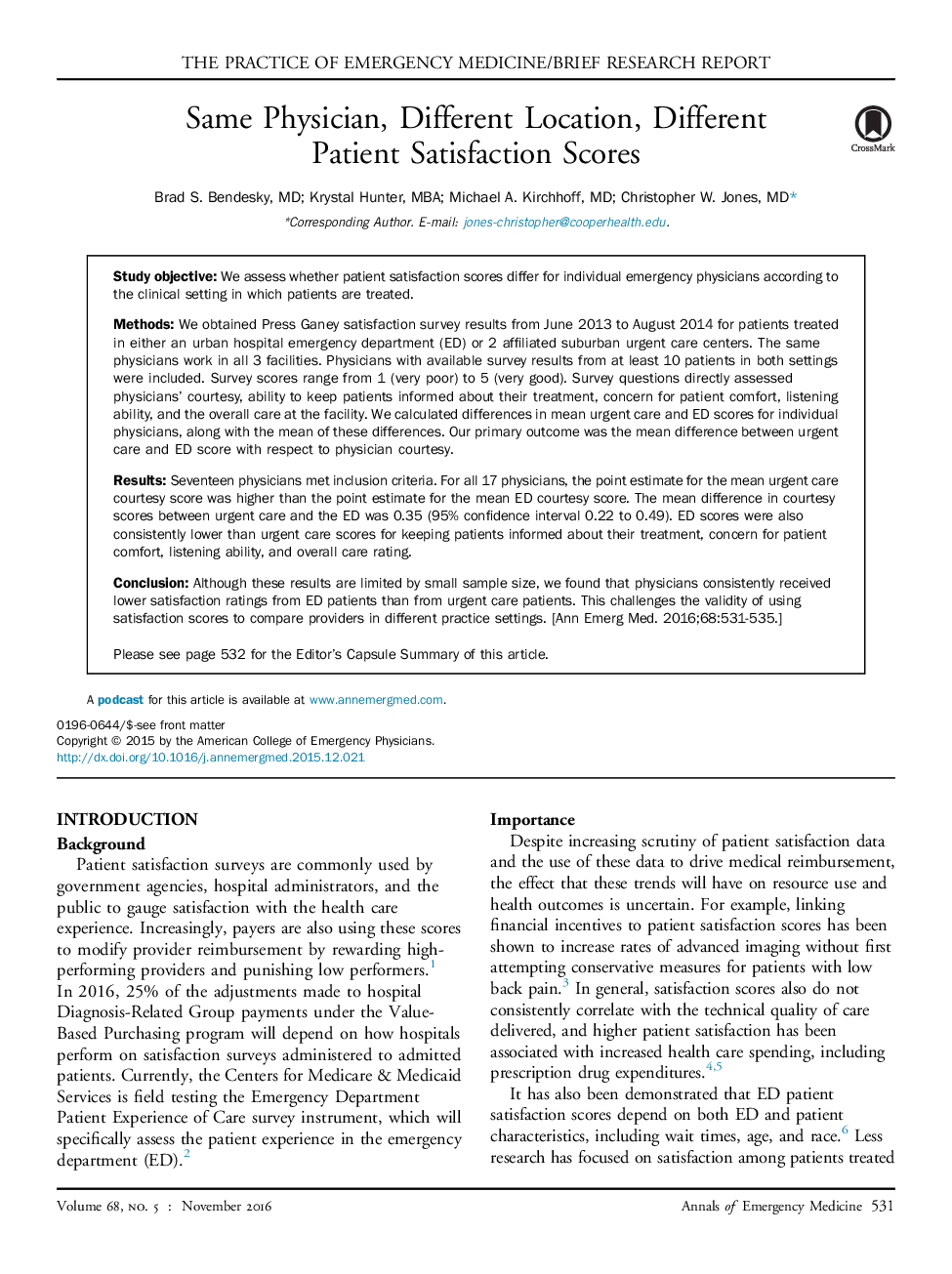| Article ID | Journal | Published Year | Pages | File Type |
|---|---|---|---|---|
| 5652070 | Annals of Emergency Medicine | 2016 | 5 Pages |
Study objectiveWe assess whether patient satisfaction scores differ for individual emergency physicians according to the clinical setting in which patients are treated.MethodsWe obtained Press Ganey satisfaction survey results from June 2013 to August 2014 for patients treated in either an urban hospital emergency department (ED) or 2 affiliated suburban urgent care centers. The same physicians work in all 3 facilities. Physicians with available survey results from at least 10 patients in both settings were included. Survey scores range from 1 (very poor) to 5 (very good). Survey questions directly assessed physicians' courtesy, ability to keep patients informed about their treatment, concern for patient comfort, listening ability, and the overall care at the facility. We calculated differences in mean urgent care and ED scores for individual physicians, along with the mean of these differences. Our primary outcome was the mean difference between urgent care and ED score with respect to physician courtesy.ResultsSeventeen physicians met inclusion criteria. For all 17 physicians, the point estimate for the mean urgent care courtesy score was higher than the point estimate for the mean ED courtesy score. The mean difference in courtesy scores between urgent care and the ED was 0.35 (95% confidence interval 0.22 to 0.49). ED scores were also consistently lower than urgent care scores for keeping patients informed about their treatment, concern for patient comfort, listening ability, and overall care rating.ConclusionAlthough these results are limited by small sample size, we found that physicians consistently received lower satisfaction ratings from ED patients than from urgent care patients. This challenges the validity of using satisfaction scores to compare providers in different practice settings.
